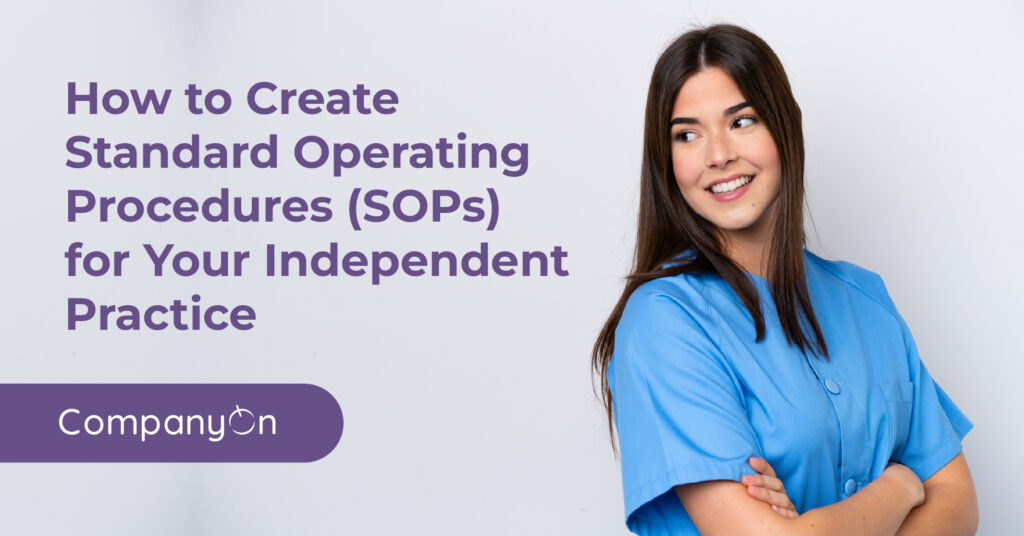How to Create Standard Operating Procedures (SOPs) for Your Independent Practice
For nurse practitioners and independent healthcare providers, establishing clear and repeatable systems is key to delivering consistent care and managing day-to-day operations efficiently. This is where Standard Operating Procedures (SOPs) come in. Whether you’re onboarding a new team member, automating documentation, or scaling your services, SOPs provide the clarity and structure your practice needs to grow sustainably.
In this guide, we’ll break down how to create SOPs that support your clinical workflows, reduce stress, and improve patient care.

What Are SOPs in a Healthcare Setting?
Standard Operating Procedures are documented instructions that outline how routine tasks and clinical processes should be performed. For independent practices, SOPs help ensure:
- Consistency in patient care delivery
- Streamlined clinical workflows
- Faster training and onboarding
- Improved regulatory compliance
- Reduced risk of errors or omissions
1. Identify Key Areas to Systematize
Start by listing all recurring tasks in your practice: – Appointment scheduling (automated scheduling) – Client onboarding (online forms) – Patient charting and documentation (SOAP notes) – Billing and invoicing (billing tactics) – Consent management (eConsent forms)
Each of these deserves a documented SOP.
2. Structure Your SOPs Clearly
Follow a consistent format to make your SOPs easy to follow: – Title of the procedure – Objective: Why this SOP exists – Scope: When and where to use it – Responsibilities: Who is involved – Step-by-step instructions – Tools or systems used (CompanyOn platform)
Example: How to create an effective invoicing process
3. Use Digital Tools to Automate SOP Execution
With platforms like CompanyOn, you can: – Embed SOPs into your practice workflows – Use tags and identifiers to trigger steps automatically (tags identifiers) – Assign tasks to team members or automate with reminders
Explore how to digitize your clinic to simplify SOP implementation.
4. Train and Onboard with SOPs
SOPs are powerful training tools for: – New hires – Locum providers – Expanding teams
Include links to video walkthroughs or screenshots where possible. For more onboarding tips, visit our article on how to streamline client intake.
5. Review and Update Regularly
Regulations, tools, and workflows evolve. Set a schedule to: – Review SOPs quarterly – Include compliance updates (regulatory compliance) – Incorporate patient feedback into process improvement (how to use feedback)
Conclusion
Well-documented SOPs reduce the mental load of running your practice and ensure every patient receives consistent, high-quality care. Start with core areas like intake, charting, and invoicing, and expand as you go. With CompanyOn, you can digitize and embed your SOPs directly into your workflow—simplifying operations and supporting growth.
Need help building your SOP library? Let’s simplify your practice, step by step.
Ready to make the switch?
Try Our Platform Free for 14 days.
See CompanyOn in Action
Schedule A Free 1:1 Personalized Demo





